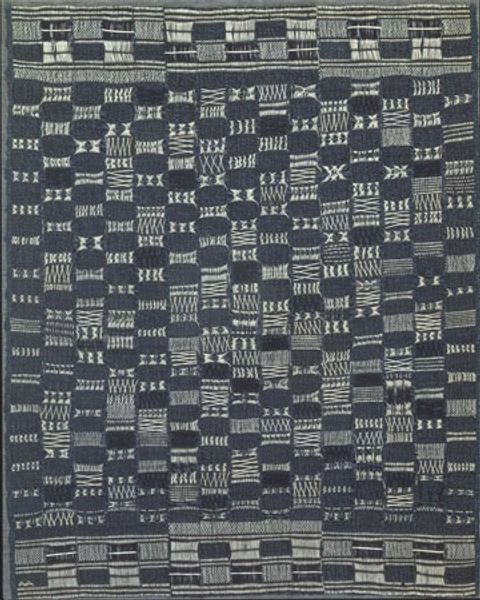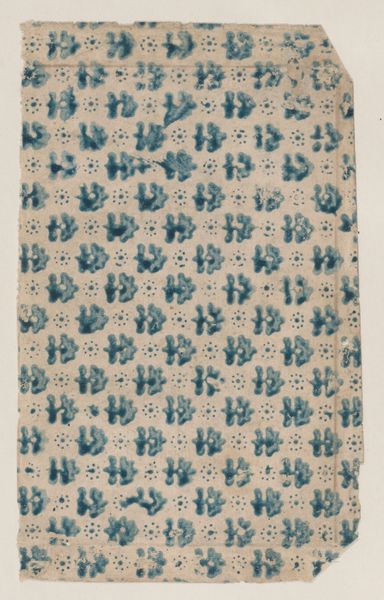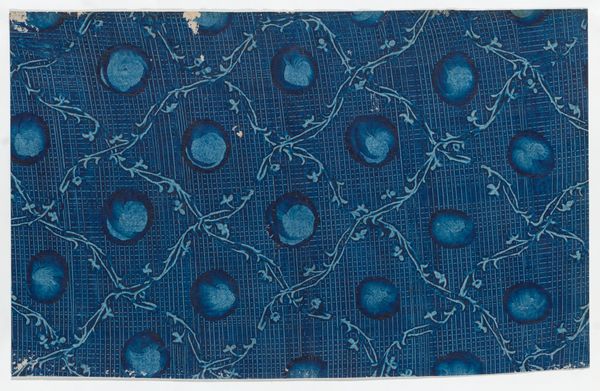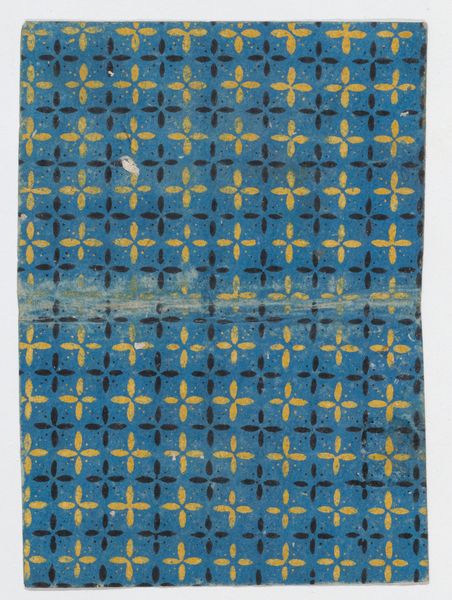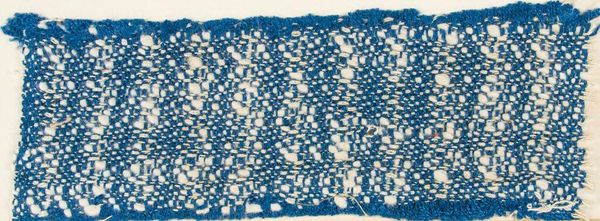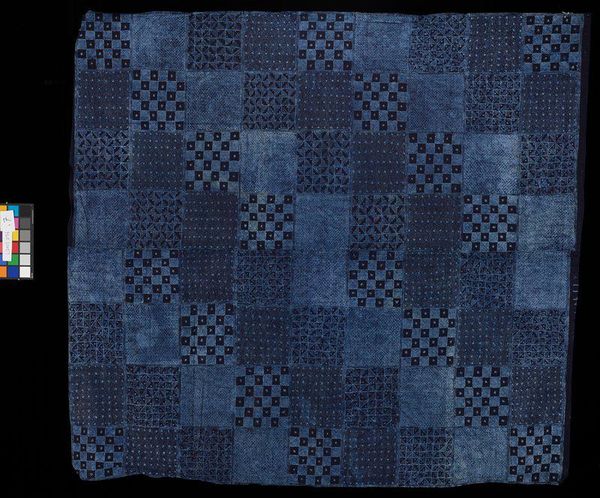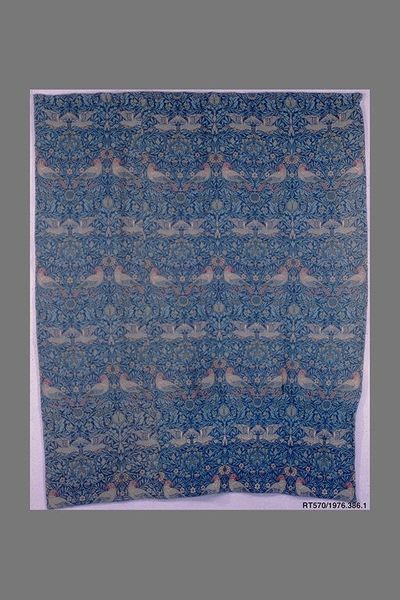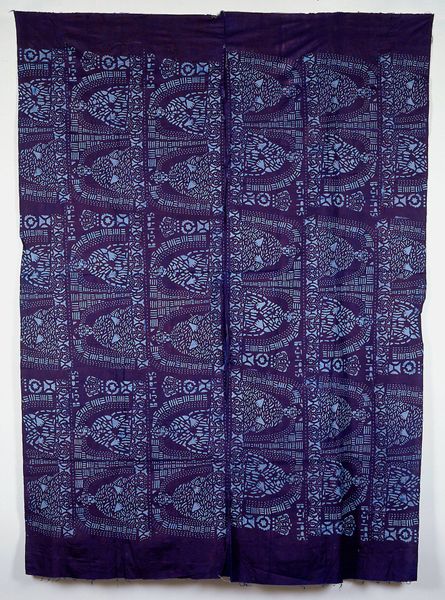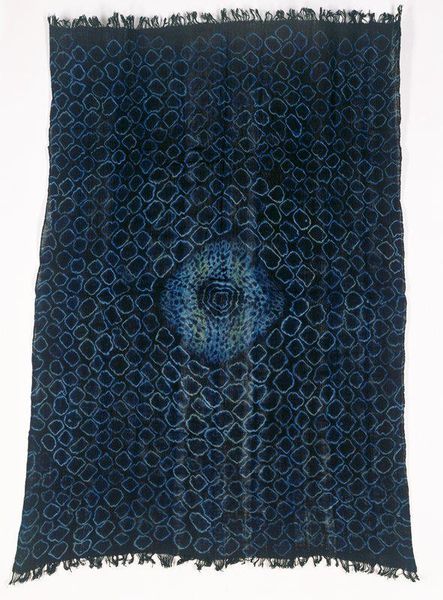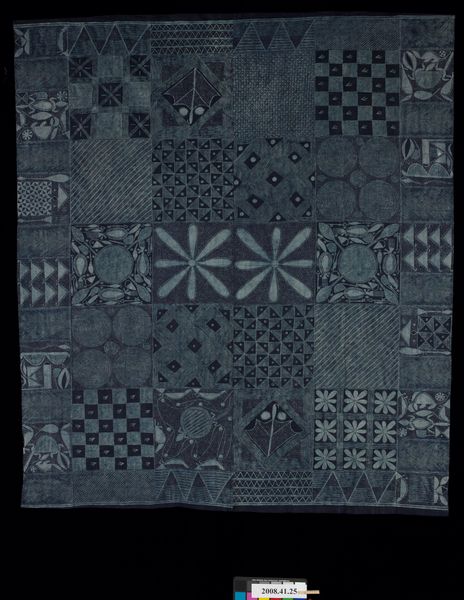
weaving, textile
#
african-art
#
weaving
#
textile
#
geometric
Dimensions: 38 5/8 x 60 3/4 in. (98.1 x 154.31 cm) (irregular, without fringe)
Copyright: No Known Copyright
Curator: This intriguing indigo textile, a "Woman's Wrapper," was created in 1998 by Kovadu N'gri Bernard. Editor: The indigo immediately strikes me as both soothing and intense. There’s this deeply restful blue, almost meditative, yet the geometry vibrates with life! The contrast is mesmerizing. Curator: Indigo dyeing is profoundly significant in West African cultures, symbolizing wealth and status but also carrying stories, proverbs, and cultural identity. These cloths aren’t just garments; they're visual libraries! The cotton would have been resist-dyed with patterns meticulously drawn, or perhaps stitched, before immersing it in the dye bath. Editor: Ah, precisely! I see those square motifs with what appears to be circles nested inside. Then there are the sets of tiny, densely packed lines—like compressed energy! Are those repeating designs common in the region? Curator: Absolutely. Geometric abstraction resonates powerfully. The grid structure implies order, but then each cell contains this vibrant microcosm. Notice that fringe. Even the tassels at the edges carry echoes of past eras and craftsmanship. Editor: Thinking about textiles across different cultures—tapestries, quilts, carpets—they function as storytellers and conveyers of communal memory. Do you sense that history speaking here too? Curator: Deeply. Think of the hands involved in every stage, from cultivating the cotton to designing and dyeing. These are the voices of women rendered visible. It has an ethereal quality, doesn’t it? Almost a ghost-like blueprint of generations and heritage. Editor: Indeed. The very nature of cloth makes it capable of absorbing histories, of shrouding and revealing, becoming a canvas for intimate personal stories as well as communal identity. Thank you, this textile is deeply moving. Curator: And thank you for illuminating its layers of meaning with me! It truly resonates.
Comments
minneapolisinstituteofart almost 2 years ago
⋮
This woman's wrapper comes from Oumé, a village in the Gouro region of southwest Côte d'Ivoire, and is intended for everyday use. Oumé cloth, pagne, is characteristically embellished with indigo tie-dyed patterns, or plangi. Indigo dyeing is a highly specialized skill and the preparation of pagne for dyeing is an art form in itself. The strips may be prepared for dyeing in one of two ways. In some instances, the patterns are tied into narrow strips of cloth and the cloth is dyed before the strips are sewn together. Another method involves sewing the strips together first, then the pattern is tied or sewn, and the cloth given to the dyer.
Join the conversation
Join millions of artists and users on Artera today and experience the ultimate creative platform.
